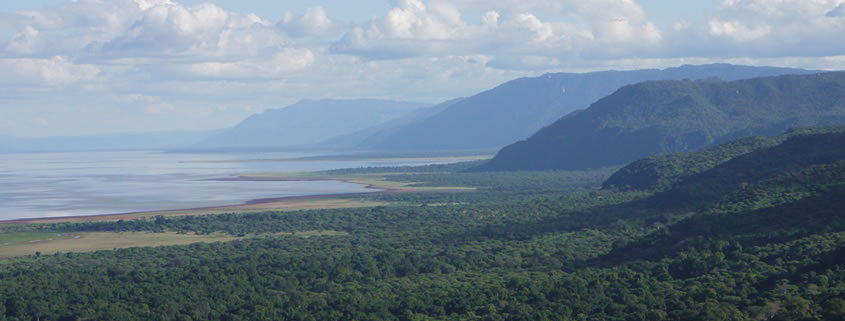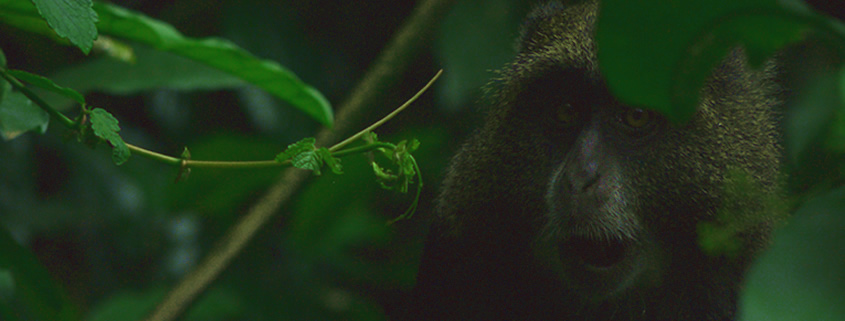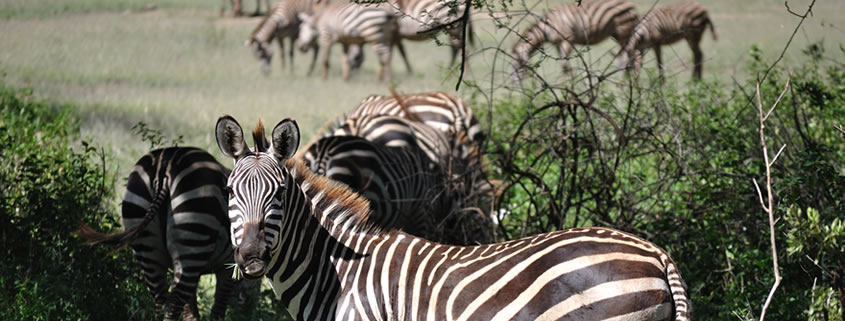Highlights
| Price: $ | Prominent features: Great Rift Valley Escarpment, Lake Manyara, hot springs |
| Popularity: ♦♦♦ | Prominent wildlife: tree climbing lion, elephant, baboon, hippo |
| Activities: biking, hiking, nighttime game drives |
Lake Manyara is the home of world famous tree-climbing lions
Adapted over the centuries to the Lake Manyara Park forest, tree-climbing lions stalk vulnerable prey from above with unobstructed views.
Lake Manyara Park is a scenic gem, rampant with hippos, impala, elephants, giraffe, wildebeest, and buffalo.
You won’t miss the families of Lake Manyara baboons in the branches overhead, grooming each other, or even crossing the path right in front of you.
Three hundred migratory birds from the flamingo to the Kingfishes rest at the shore of the highly alkaline volcanic lake.
The Great Rift Valley Escarpment rises six hundred meters high above the lake and forests. The Escarpment is an ever-present sight around Lake Manyara extending north and south as far as the eye can see.
Explore
Families of baboons are ever present in the lake area, swinging through trees and scavenging on the forest floor. Hippos, elephant, impala, buffalo, warthogs, giraffes, kudu, wildebeest are also regular fixtures in Lake Manyara Park among a variety of other African birds and animals.
Beautiful baobab trees, mahogany trees, and gigantic fig trees create a forest canopy. In the acacia forest tree-climbing lions lounge about, searching the forest floor for prey.
Additionally, over 400 birds including the flamingo, stork, comorant, Long-crested Eagle, Grey-headed Kingfisher, and the impressive giant horn bills fill the area.
Lake Manyara is a serene escape in the shadows of the Great Rift Valley Escarpment — a breathtaking monolith carved by gigantic geological forces millions of years ago. Lake Manyara National Park is 329 km2 (127 mi2). The shallow alkaline lake covers well over half of the area.
Much of the plant and water life at Lake Manyara Park is supported by fresh water springs from underground and from streams running off the escarpment into the lake. Fresh hot water springs are visible in two sites in the park.
The best time to visit Lake Manyara National Park is during the drier months, from May to October.
To experience the waterworks of Lake Manyara, visit during January to March. Capture beautiful lakeside photography next to the distinct Rift Valley.
At 960m-1478m above sea level, humidity is low.
Daytime temperatures are comfortable with average temperatures from the mid 70s to the mid 80s Fahrenheit, and cool nights are usually expected in the 50s to 60s Fahrenheit. It is warmer and slightly more humid during the short rains from November to December and April to May.






